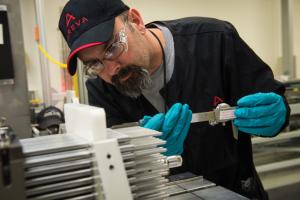Deciding whether to go forward with a second license renewal.
Lee Williams is senior vice president for installed base projects at AREVA Inc.
Pick up the paper or listen to the energy pundits today and you will likely hear plenty of commentary about topics ranging from natural gas to new solar power purchase agreements to efforts to comply with the U.S. Environmental Protection Agency's (EPA) Clean Power Plan. In the midst of these conversations, nuclear power plants across the country continue to generate megawatts around the clock, powering nearly 20 percent of the grid and producing 63 percent of our nation's carbon-free electricity.

What would happen if that 20 percent of electricity from nuclear were taken off the grid? While natural gas is the only other option that provides the flexibility and dependability necessary to meet the needs of a modern power system, it makes meeting the goals of the Clean Power Plan nearly impossible. Nuclear energy provides a physically secure and financially stable source of generation, unlike any other source available today. At the same time, a gas-fired generator needs only 20 employees to operate, while a nuclear power plant can employ 350 to 1,000 highly skilled and compensated people.

